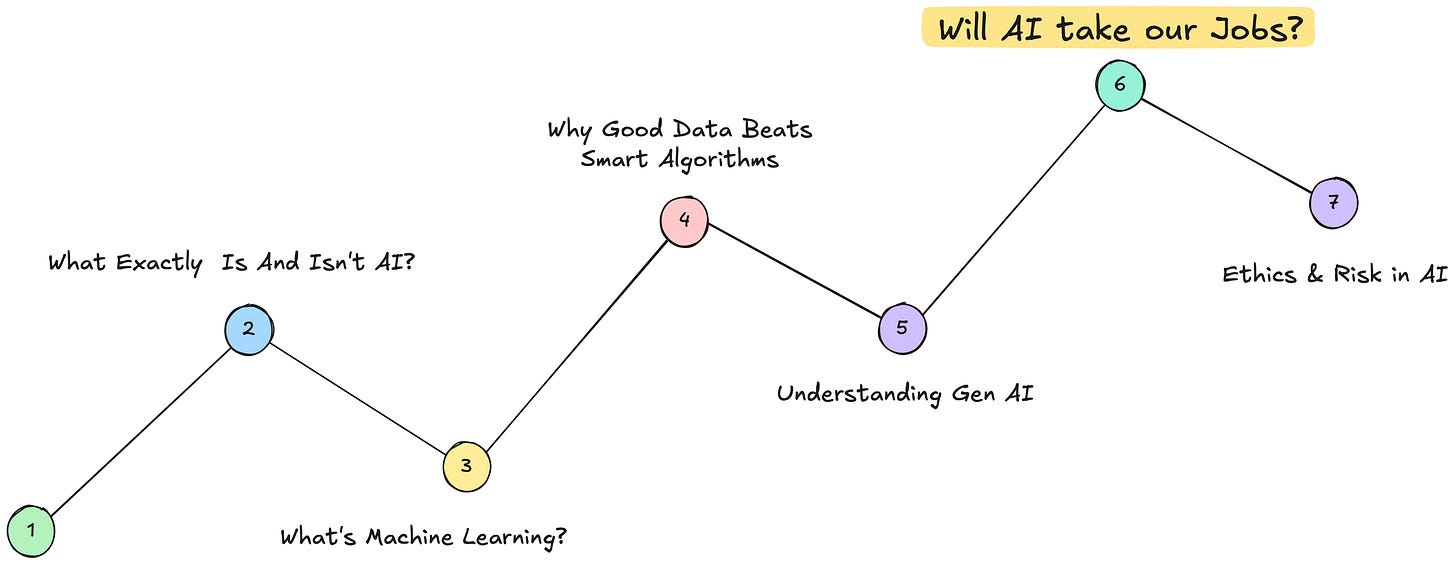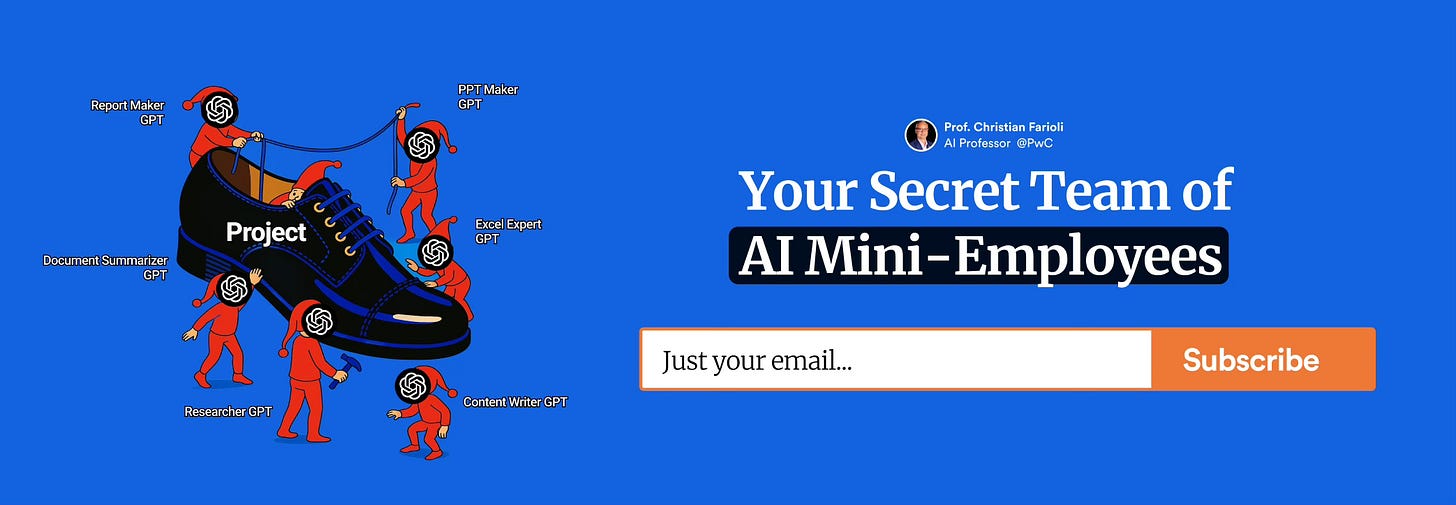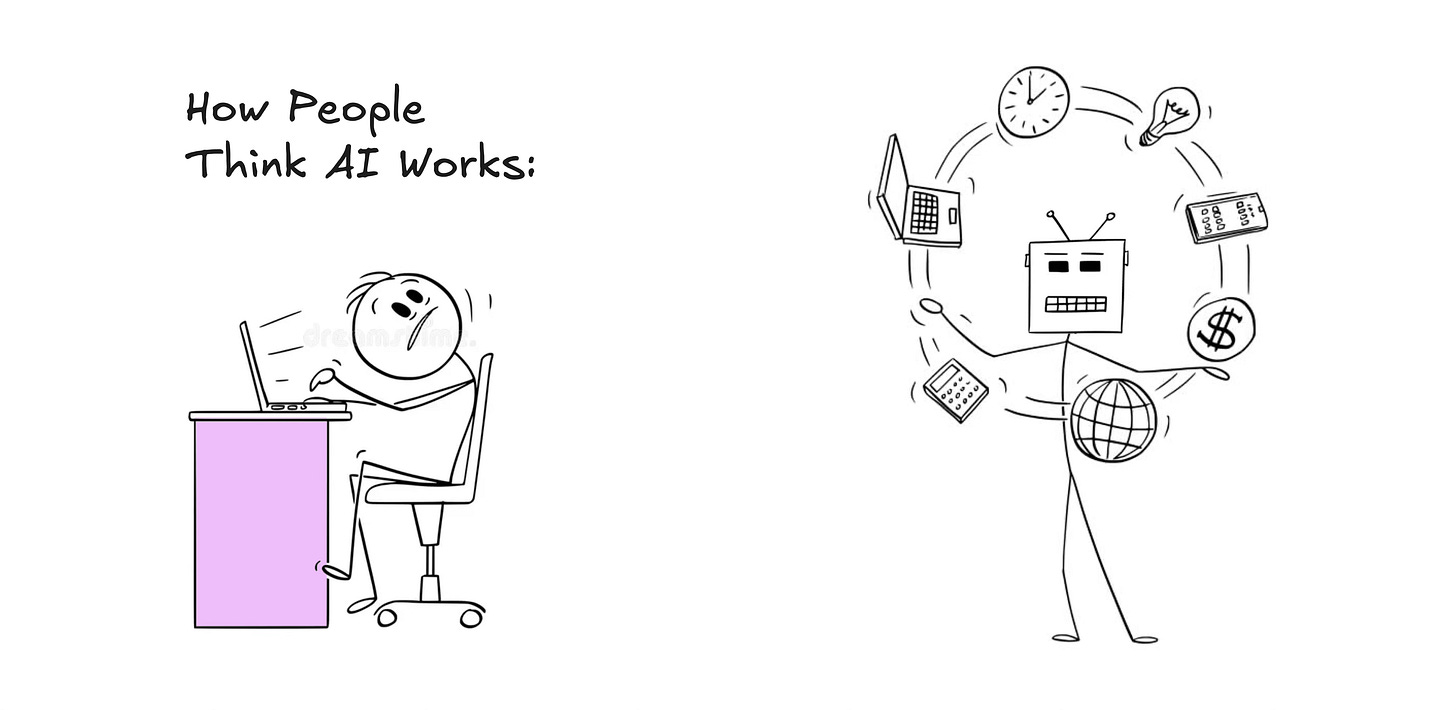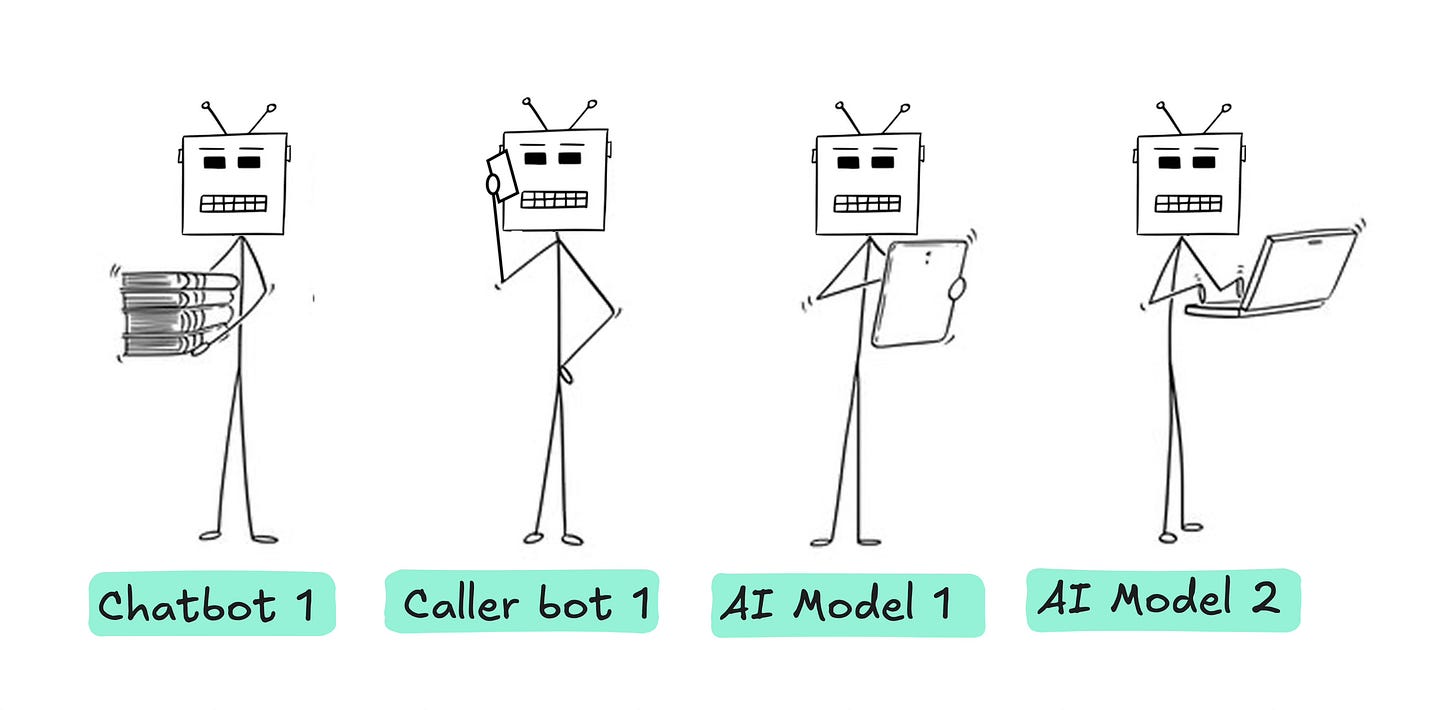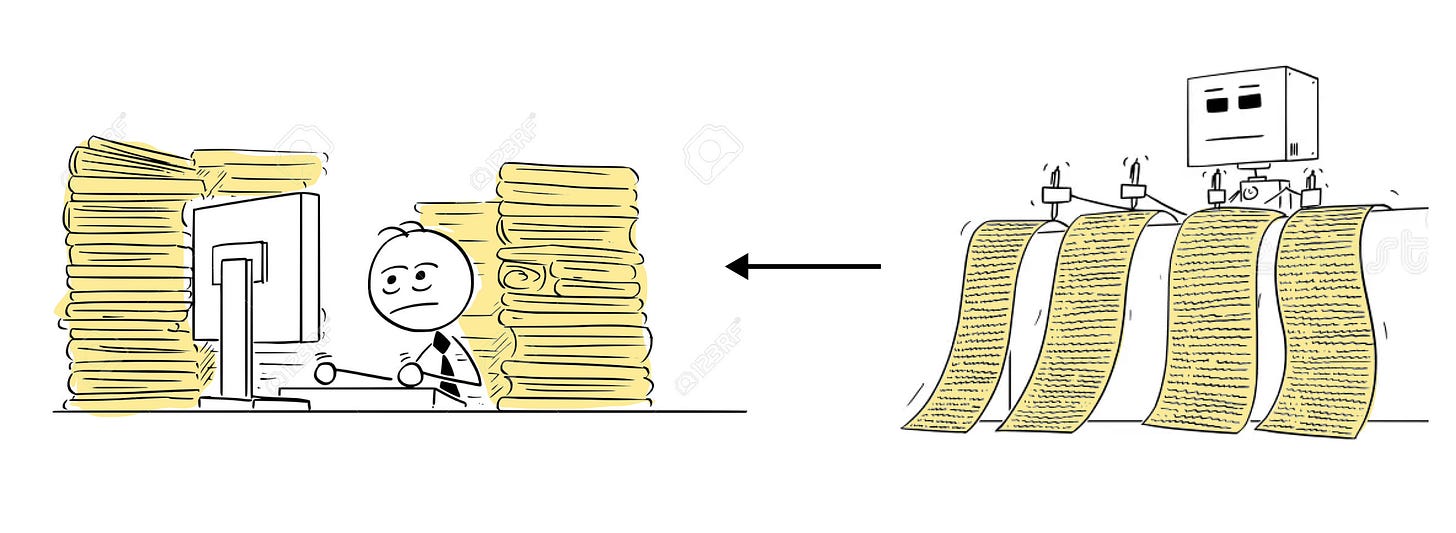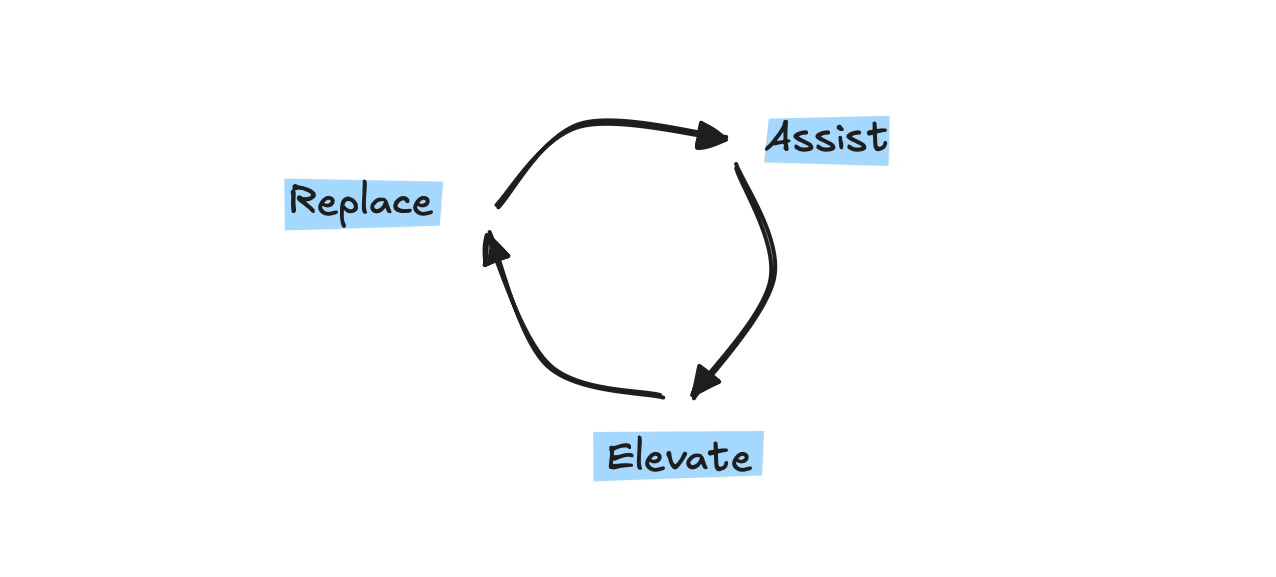Hello!
This is our 6th Newsletter in the “AI Fundamentals” series.
If you haven’t checked out the first five, click here!
Before We Start, I’ve Something Interesting To Share!
I’m starting a new “AI Newsletter Series” this week.
It’ll be all about How To Create AI Mini-employees (agents).
For managers
For HRs
For every mid-level leader!
People fear that AI will take our jobs.
Is that really true?
Will AI replace people?
Or just changes the work?
This newsletter dives deep into these fun but serious questions.
Let’s begin!
1. AI Replaces Tasks — Not Entire Jobs
People think that AI will replace their entire jobs.
That one machine will do the entire work of a person or a team.
However, that isn’t how AI works.
See.
Most jobs are made up of 100s of tasks — not just one.
→ Some tasks are repetitive.
(like filling forms or checking emails)
→ Others need specialized intelligence
(like thinking, caring, teamwork)
AI is excellent at the first type.
But it‘s bad and untrustworthy with the second.
In simple words: AI can’t replace human judgment.
It can’t take responsibility for its decisions.
Example:
A customer service rep handles 30 queries a day — 20 repetitive, 10 complex.
AI might answer 20 common ones — but the rest need empathy, judgment, or escalation.
What Leaders Should Do
Don’t ask: “Will AI take this job?”
Ask: “Which parts of this job can AI do better?”
Break jobs into tasks.
Identify what can be automated. Keep the rest human.
Support people to shift from “doing” to “thinking.”
2. Automation Is Not the End Goal
Automation is a BIG feature of AI.
It saves time and makes things faster.
However, faster isn’t always smarter.
Consider this scinerio:
A finance team may use AI to process invoices faster.
Great! They now save 20 hours a week!
But what do they do with that time?
If nothing changes, they’re just rushing the same work.
The real value of AI is in its assistance, not automation.
AI can do more than automate — it can assist.
It can highlight errors.
It can suggest ideas.
It can even predict problems.
Example:
In healthcare, AI can read thousands of scans. And doctors may spend more time diagnosing.
Humans stay in control. But with better tools.
What Leaders Should Do
Shift your mindset: AI is a partner, not a replacement.
Train teams to use AI, not just accept it.
Redesign workflows — don’t just speed them up.
3. High-Skill Jobs Are Changing Too
There’s a common myth that “AI will only impact the low-skill, manual jobs”.
However, this is furthest from truth.
AI now:
Writes emails
Analyzes contracts
Makes legal drafts
Writes code
High-skill jobs are changing too.
Not disappearing, but changing.
Because even the high-skill jobs rely on:
Writing
Problem-solving
Data analysis
Exactly what modern AI competent at.
What Leaders Should Do
→ Encourage cross-skill training.
→ Help teams stay adaptable — not just specialized.
→ Teach people to ask better questions — and evaluate AI’s answers.
A Simple Framework for the Future
Don’t ask: “Will AI take our jobs?”
Ask: “How will AI change our jobs?”
Use this simple model:
Replace: Let AI handle routine, low-thinking tasks.
Assist: Use AI to boost insights and decisions.
Elevate: Shift people to focus on strategy, empathy, leadership.
All three can happen in the same job — or the same day.
What Leaders Can Do — Starting Now
1. Break Jobs into Tasks
Don’t look at job titles.
Look at daily tasks — one by one.
Identify:
What can be automated?
What needs human touch?
2. Focus on “Why” — Not Just “Who”
Instead of asking “Who does this task?”, ask:
“Why does this task exist?”
“What’s the outcome we want?”
This helps teams work smarter — not just faster.
3. Train Teams to Use AI Well
Teach prompt writing — how to ask AI better questions.
Encourage checking — AI helps, but humans lead.
Build habits — ask, verify, and refine with AI support.
AI is not the enemy of jobs.
It’s the end of old jobs — and the start of better ones.
Work becomes more human, not less.
Less time on repetitive work.
More time on creative thinking, teamwork, and strategy.
The real question isn’t “Will AI replace us?”
It’s “What will we do — now that AI can handle the small stuff?”


